Many fast-growing cities in the semicolonial world have shantytowns at their periphery (and sometimes right in the centre) – semi-legal wastelands where the newest and most impoverished arrivals from the surrounding countryside gather for mutual protection. These are communities of the unwelcome, and whatever the hardships of these cardboard-and-plastic towns, they offer some kind of relief from ruthless landlords and their cops. In Kota Kinabalu, the shantytowns are separated from the main city by a stretch of water. They exert a strange fascination on visitors, because they occupy a particularly picturesque and inviting location.
Pulau Gaya is only a short distance off-shore. Like the other islands of the Tunku Abdul Rahman national park, it is a beautiful, bush-covered nature reserve. There are no dwellings on the island itself. But the surrounding sea is shallow and sheltered, and this circumstance has permitted people to build whole villages out over the water on stilts. Between the green hills of the island behind and the blue sea live hundreds of people. More houses are being added all the time.
When I expressed an interest in visiting one of these villages, I was advised against it: they were desperate, crime-ridden slums, and I would probably be robbed, I was told. Since I know that the same things are said about the part of the city where I live in New Zealand, this only fueled my curiosity. Nobody would take me there, I was told. If you insist, make sure you leave your wallet at home and be out of there before night falls.
It was not hard to find someone to take me. The inhabitants of these villages make up a big part of the workforce in Kota Kinabalu, and so boats are buzzing back and forth the whole time, bringing commuters and supplies. My guide was one of these commuters. He took me on a tour of the closest and oldest village. It was rough. The houses were flimsy: thin plywood walls and corrugated iron roofs, with plastic sheets filling the gaps. I was afraid to trust the boardwalks between the buildings with my weight. The water beneath was strewn with sunken garbage of all kinds, especially plastic bags. I didn’t like to ask about the sewage arrangements.
Yet for all that, it was a real, organised community, with shops, boat-building and repair workshops, and a volleyball court on the beach. Diesel generators brought a small but vital supply of electricity to the village, and at least one of the shacks had a TV dish on the roof. My guide led me up a track behind the beach to show me the community’s most recent achievement, something they had been fighting for the right to build for years: a little reservoir bringing a piped water supply from the island’s catchment.
Continuing along the track through the bush, we came out onto another beach, with another stilt village. This village looked different. There were several sturdy-looking buildings along the shore: a school, a mosque. The boardwalks looked newer and much stronger. There was a rubbish-collection system. Some of the houses seemed quite comfortable, and had netting and fences to prevent little children falling into the water – something lacking at the first village.
I asked my guide why the two villages were so different. “We are Filipinos. They are Malaysians – citizens. We are not given permission to build like this.” He himself had arrived as a young man in the 1980s with his family, during the last days of the Marcos regime, when thousands of Filipinos fled the dictatorship and its repressions. Thirty years later, they had just been granted the right to a water supply.

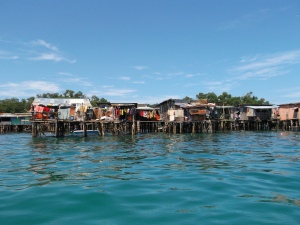
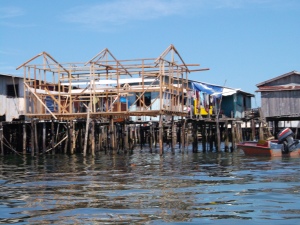
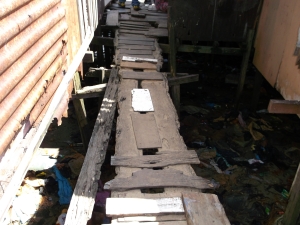
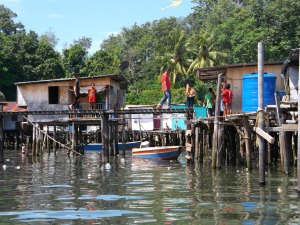
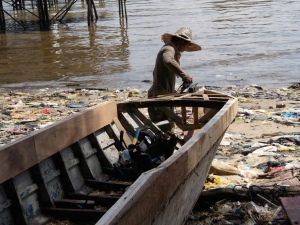
Pingback: Island Adventure in Kota Kinabalu, Sabah | Flyhoneystars x Follow My Footsteps·
Pingback: Island Adventure in Kota Kinabalu, SabahFlyhoneystars x Follow My Footsteps | Flyhoneystars x Follow My Footsteps·